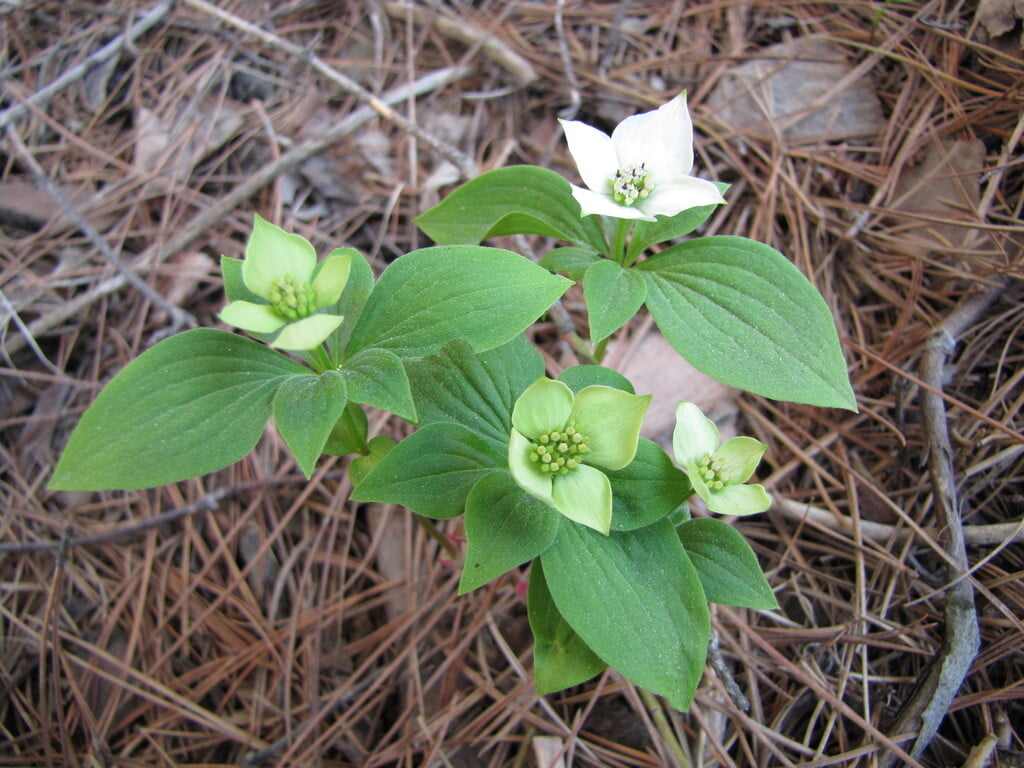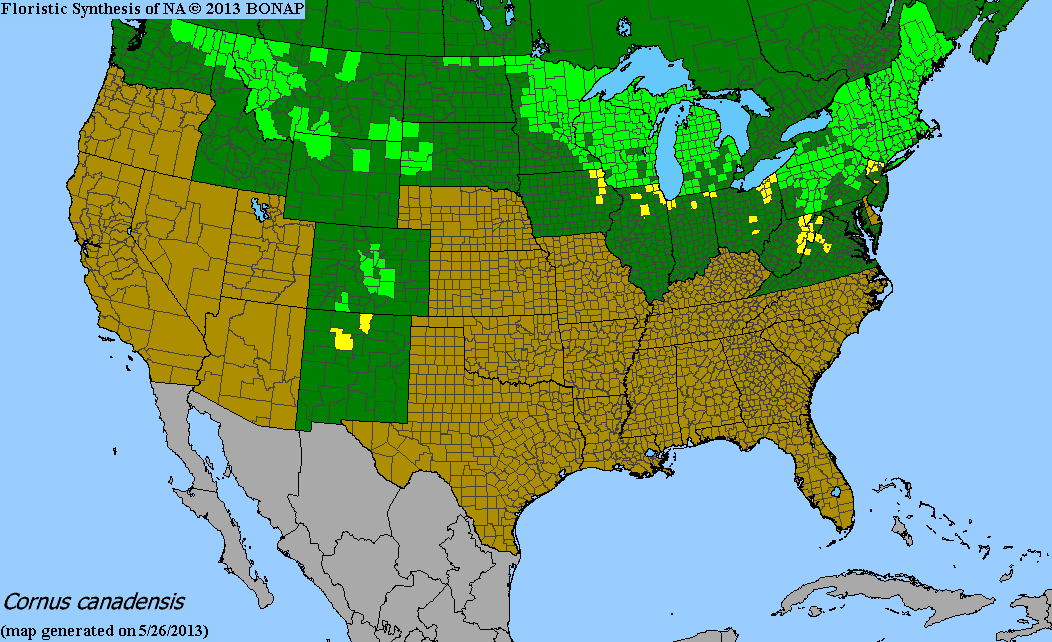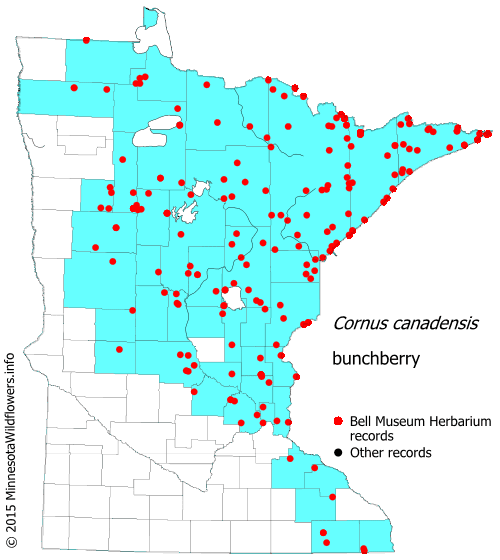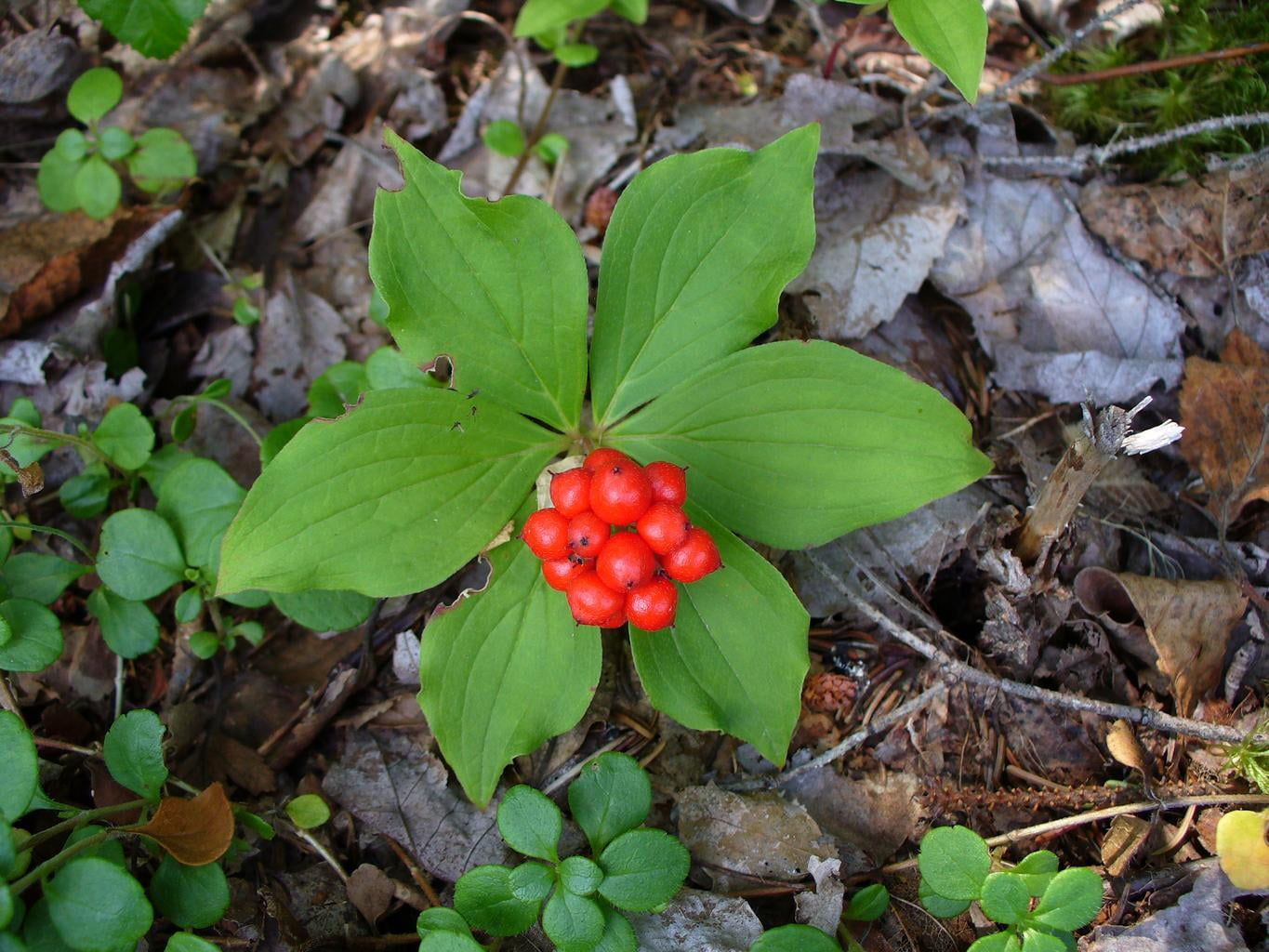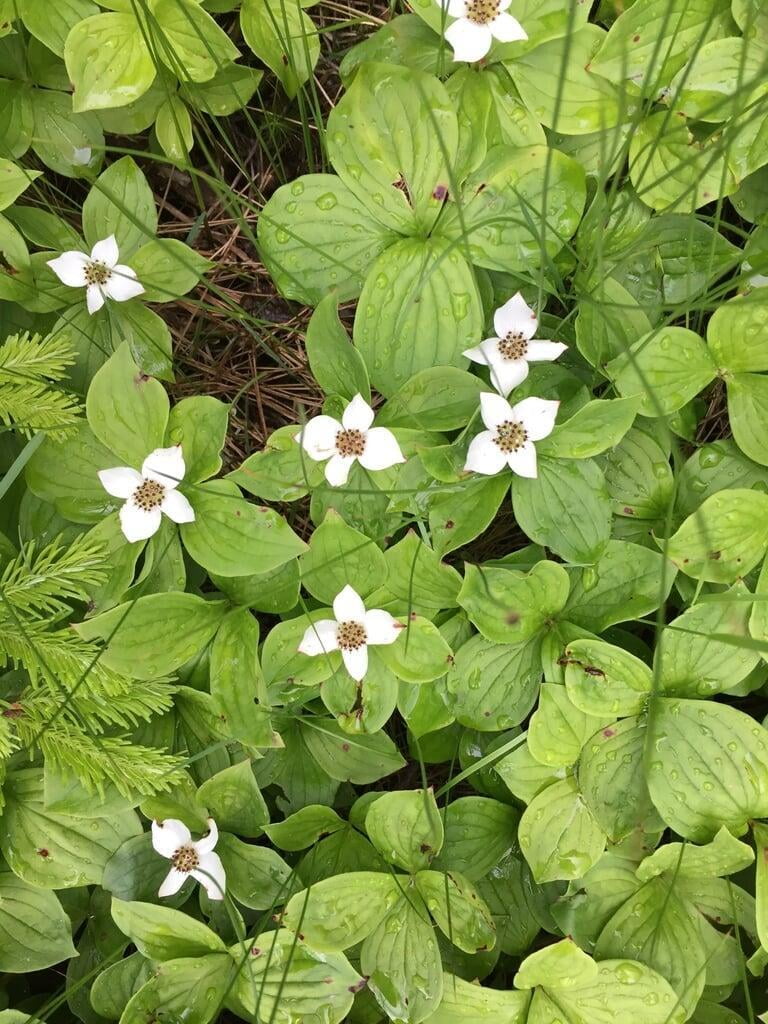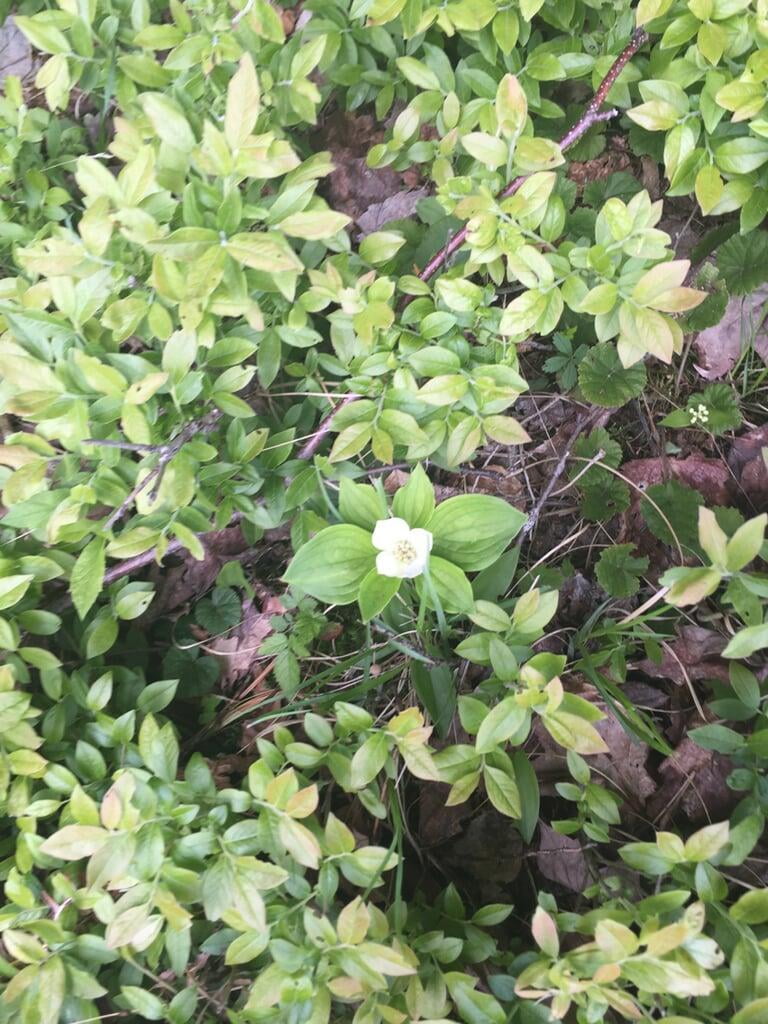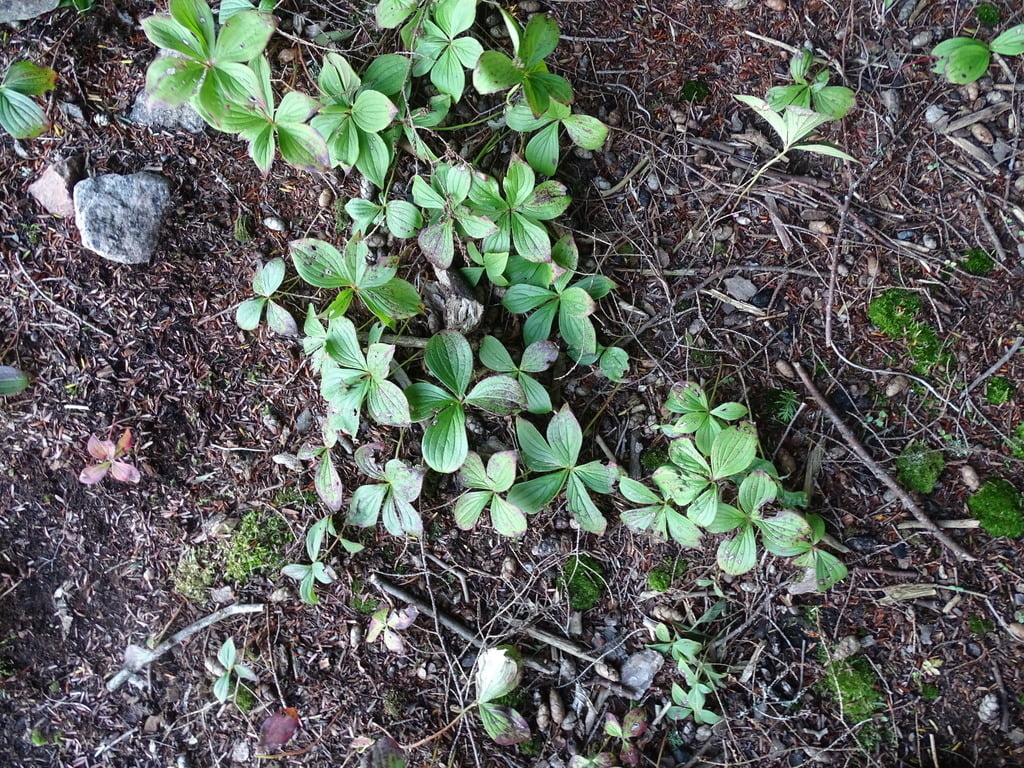Cornus canadensis
Bunchberry Description:
Cornus canadensis, commonly known as Bunchberry, is a herbaceous perennial plant native to North America. It is a member of the dogwood family and typically grows to be around 4-8 inches tall, with a spread of up to 12 inches. The plant has four to six leaves that are arranged in a whorl pattern at the top of the stem, and each leaf is oval-shaped with prominent veins.
Bunchberry produces small, white flowers that bloom in late spring and early summer, typically from May to July. The flowers are clustered in the center of the whorl of leaves, and they are followed by bright red, edible berries that resemble miniature apples. The fruit is tart and high in vitamin C, and it is a popular food source for birds and other wildlife.
Cornus canadensis prefers moist, shady environments and can be found in a variety of habitats, including forests, bogs, and meadows. It is often used as a ground cover or border plant in landscaping, as it spreads slowly by underground stems called rhizomes. The plant is also known for its medicinal properties and has been used by indigenous peoples for various ailments, including digestive issues, fever, and inflammation.
Native Range:
Bunchberry is native to Minnesota and is most commonly found in the Northeastern regions of the state. More broadly, Bunchberry can be found in mostly Northern parts of the continental United States from Washington to Maine.
Standard Plant Information:
Plant Height: 4"-8"
Bloom Time: May - July
Preferred Habitat: Does well in part shade in acidic soil. Often found in moist woods and bogs.
Sowing:
For most homeowners, the best option is to scatter seed on the ground by hand broadcasting at a minimum of 16-64 pls ounces per acre. For even coverage, we recommend that you broadcast seed in perpendicular rows across the site to ensure even coverage.
You’ll want to broadcast any grass seed first, which will get raked into the soil lightly. Next, it is ideal to mulch the area lightly with either a clean (no seed) straw or preferably with our native Little Bluestem straw, sold at our retail garden centers. After a light mulching is complete, now it’s time to broadcast your native wildflower seeds, which should not be raked into the soil. A good rain or watering is sufficient to cover the seed.
Planting:
Simply dig a hole in the soil slightly larger than the plant’s roots. Ensure that the soil line of the plant is maintained during the transfer (i.e. the plant should be at the same level with the ground as it was in the pot). Pack any loose dirt back around the plant and make sure you water it well the same day to ensure it has the best chance of survival.

